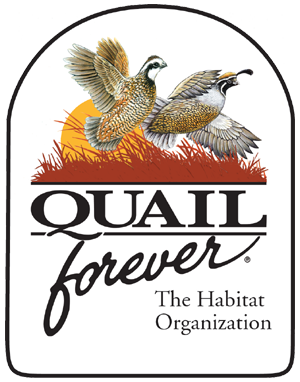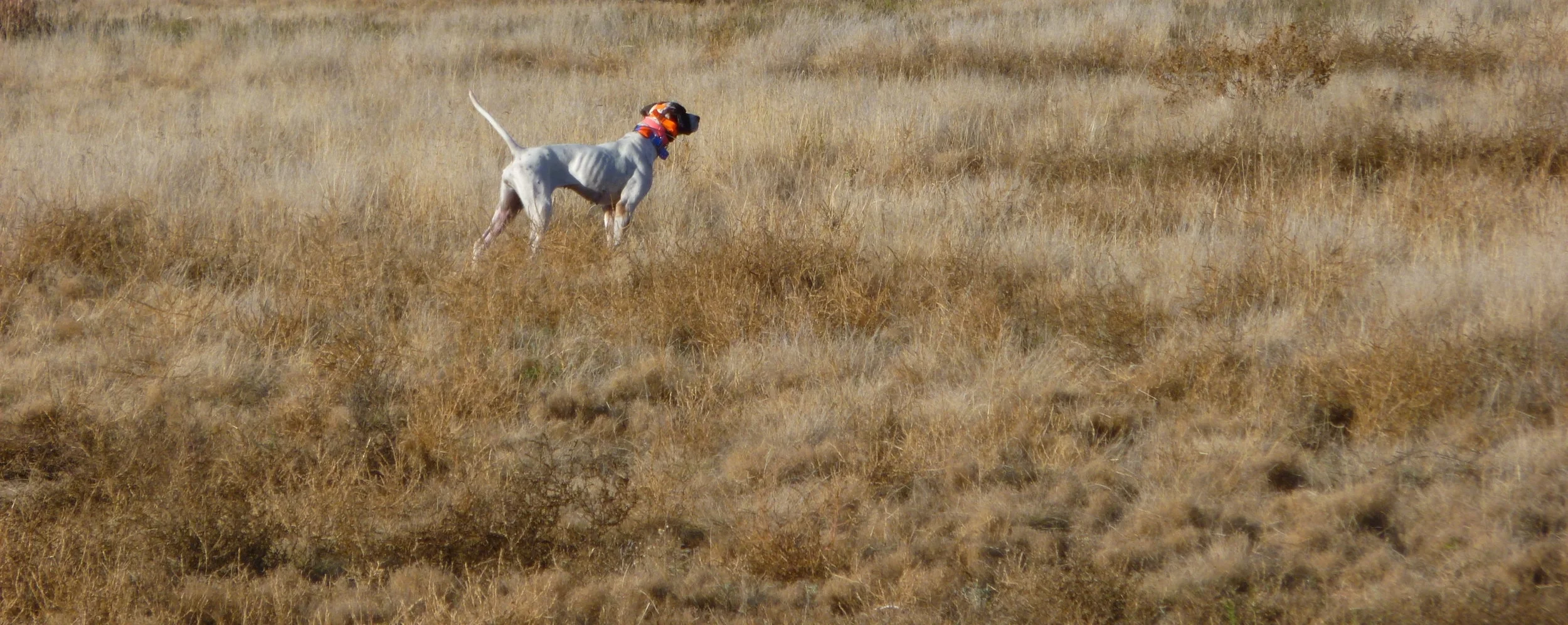Cycles in quail habitat determine populations. Habitat and weather are the two biggest factors affecting quail populations.
This section from paper: A Pattern to Population Oscillations of the Bobwhite Quail in the Lower Plains Grating Ranges of Northwest Texas, by A. S. Jackson, presented at the 16th Annual Conference of Southeastern Association of Game and Fish Commissioners, Charleston, South Carolina, October 1941.
Bobwhite fluctuations in the Rolling Plains of northwest Texas generally may be said to follow the sequence outlined below:
a. The picture starts with a drought of several years' duration, grazed-out and barren ranges, and minimum bobwhite numbers. The relic population survives in niches of stable habitat along brushy watercourses, about ranch buildings and feedlots, and at field edges where weed seeds and waste grain result from the land use. These quail are, in a sense, selected stock and, to a degree, adapted to scant cover. They represent the fittest of the last year's population.
b. As the drought progresses, soils on which the grass turf has been broken give rise to weedy plant successions with each spring and summer's scant rainfall. The seeds go largely unharvested and relatively few germinate. The rest are added to the store of dormant seeds, which are nearly always present in grazing range soils. The first year of increased rainfall will bring about a mantle of crotons, sunflowers, ragweeds, snakeweeds, and other suppliers of good winter food. The herbaceous ground cover affords functional but fragile quail cover when supplemented by the lower branches of mesquite shrubs. Now the nutritional situation is good, the predator population has lagged for want of food during the dry years, and the bobwhite has the advantage in reproductive potential to rapidly extend and occupy the range. Call this a lateral increase of quail.
c. A year of excessive rainfall breaks the drought. A great amount of the mesquite brush range is canopied with snakeweed, which provides excellent winter cover yet is open enough beneath for freedom of quail movement in feedings. Now the range is all bobwhite habitat. Bobwhite colonizes it and begins his increase in population density with nowhere to go but up. The food picture is still good and reproductive success is high. Call this a vertical increase.
d. Another year of adequate rainfall occurs, with good moisture carryover from the previous season. Bobwhite has a big hatch and the population explodes. Coveys occupy all marginal habitats and overflow into roadsides and towns. In the meantime, the last year's plant succession is giving way to one composed principally of grasses and forbs providing little food for quail. The great mass of the bobwhite population finds itself in unstable habitat and very probably competing with an eruptive rodent population for a diminishing food supply. The same conditions and an even higher reproductive potential have brought about high rodent numbers.
e. The bobwhite population crashes if food and/or cover fails before spring growth makes other sources available. Otherwise, the numbers may not show decline until some time after the close of the hunting season, and the decline will not be apparent before the next season. The spring shuffle will have spread the survivors thinly over the range, and the fall population will depend upon the success of the reproductive season (i.e., the supply of young bobwhites). In any case, the hunter will find his birds in niches of habitat that are exceptions to general conditions. If annual rainfall hovers in the vicinity of normal, this continues to be the situation for several seasons and results in minor population peaks and depressions.
f. Dry years set in and continue. Conditions revert again to the ones described under item (a).
The weedy successions and high bobwhite populations which accompany them are hardly worth the cost if, to enjoy good hunting, we must first endure droughts and costly range depletion. The preceding analysis, which is over-simplified for any particular habitat, is given in order to impress the landowner and sportsman with the role of plant successions in the ecology of the bobwhite.
Heretofore, we have largely been afforded good quail hunting by the twin influences of rainfall and grazing, which, from time to time, set back the clock of plant succession. These, however, demonstrate a principle, which can be put to use on a practical scale by those who would like to improve or develop quail habitat and are willing to sacrifice a small amount of land surface for this purpose. That principle is that soil disturbance sets back plant successions, resulting in more of the key producers of quail food. The management of these foods need not involve a large percentage of the total acreage, or extensive range misuse. It only requires that a different view be taken toward patches of forbs (weeds) and a residuum of brush.
Fortunately, plant successions can be set back by means other than overall severe grazing. These methods work best in the middle and wet end of the rainfall cycle, leaving only the problem of the critically dry years. Even in these years, ranges will produce more quail cover and food when properly managed.
Eyeworms and Quail - the facts
A high-profile parasite has been the subject of much speculation lately related to the plight of northern bobwhite quail. But no scientific evidence exists to support a widely held public opinion that eyeworms are to blame for an unexpected decline in the number of these game birds this past year.
Upland game biologist Derek Wiley with the Oklahoma Department of Wildlife Conservation said eyeworms in quail have been reported since 1961. The existence of these parasites is nothing new to researchers.
“There are no studies that can attribute increased mortality of bobwhites to eyeworm parasites,” Wiley said.
Recent research shows that eyeworms were among four common parasites regularly found in bobwhites. Eyeworms, which gather behind the bird’s eyes and feed on blood, were found in around 50 percent of studied birds. Eyeworms are also found in other game birds, including ring-necked pheasants and lesser prairie-chickens, and in nongame birds including mockingbirds.
Wiley said they have been documented in 28 avian species, but there is no scientific evidence that eyeworms are themselves responsible for greater bird mortality.
Talk of eyeworms became more common when quail harvest took a dive for the 2017-18 hunting season after what seemed like an outstanding early summer hatch.
Alan Peoples, the Department's chief of wildlife, said, “Last year, we had good reproduction early. But a good part of our harvest was post-August-hatched birds.” So the question became, what happened to the earlier hatched quail?
“Everybody wants to point the finger at something as a cause,” Peoples said.
Wildlife Department Assistant Director Wade Free has been an avid quail hunter for decades. He said what happened during the 2017-18 quail hunting season has happened before.
“I think there’s been three times in my hunting career where – I call it the quail triangle – where you have the birds going into the fall but then they are hard to find by the opener. This year, the spring weather was looking good – it was almost textbook. And we were in the third year of what research has shown is the big comeback.
“We were in that third straight year of what was looking like good numbers of birds in late summer, and a significant portion disappeared before the season began.”
Many factors combine to influence the boom and bust cycles that bobwhite populations go through naturally.
Hunting in western Oklahoma, Free kept records that showed he only had six great weather days throughout the 97-day season when humidity, moisture and temperature were conducive for dogs to find birds. "While numbers may fluctuate, there were still birds around, but the dry conditions compounded the problem," Free said.
He observed only one morning during winter with frost on his vehicle, a testament to how dry the conditions were most of the time. Because of those dry conditions, Free believes hunters simply weren’t able to find as many birds even though there were quail on the ground in western Oklahoma, despite reported declines.
“When you’re set up to have what looks like a great season, there’s only about 50 things that can go wrong.”
Peoples said weather and habitat have always been the major keys that support good quail numbers. But when a population is stressed by environmental conditions such as drought or extremely high temperatures, parasites can affect overall health.
Free said, “We don’t have enough baseline data over time to equate eyeworms to population declines. We are embarking on some testing for a multitude of things – parasites and disease – over time that will give us a baseline … when we have upswings or downturns as to what that might relate back to.”
Wiley pointed out that quail hunting this past season was better than in 2011 and 2012, and that bobwhite numbers will rebound in time. Free agreed.
“We have birds on the ground, and we remain positive. Quail are a boom and bust species, and although numbers dropped off this year, birds can easily rebound this spring.”

